Redwood Drive on a Tuesday afternoon. Photos by Andrew Goff.
Garberville is in a bad way.
The collapse of California’s cannabis market has devastated the local economy and left communities throughout Southern Humboldt struggling to stay afloat. Businesses are closing left and right, and residents who have built their livelihoods around the region’s prolific cannabis industry fear they will lose everything.
Communities nestled in the most remote corners of the county have been hit the hardest, but the cannabis industry’s decline is the most evident in Garberville.
You can spot pockets of energy up and down Redwood Drive, but the vacant shops and hints of glory days past are more obvious. There’s a lingering sense of “Now what?” in the air.
Dusty trucks still rumble down Redwood Drive, the unincorporated town’s main drag, on various dirty job missions. Neighbors stop by Getti Up for coffee and chat outside of the Woodrose Café. Christmas decorations still adorn several storefronts, and members of the Southern Humboldt Business and Visitor’s Bureau Southern Humboldt Chamber of Commerce and Visitors Center have festooned light poles with holiday-themed banners and wreaths. Residents are still trying to make the best of a difficult situation. [Apologies for the error above. —Ed.]
It’s worth noting that Humboldt County is no stranger to economic downturns. Over the past two centuries, boom-and-bust industries have dominated our region, from a brief brush with gold mining in the 1800s to the crash of the region’s prolific industrial logging industry in the late 1990s. The difference between now and then is, when the timber industry began its descent, it was the black market cannabis trade that picked up the slack.
The question is, what will replace cannabis?
Empty storefronts on Garberville’s main strip.
“We’re in Crisis Mode”
For months, Garberville residents and business owners have taken to social media, Board of Supervisors meetings and other public venues to sound the alarm over a precipitous decline in local sales, a drop that is largely attributed to the ailing cannabis economy.
“It seems as though we’re hearing of businesses closing every day here,” Laura Lasseter, executive director of the Southern Humboldt Business and Visitors Bureau (SHBVB), told the Outpost during a recent interview. “There are some businesses that say, ‘My business has nothing to do with the cannabis industry’ and, well, how’s your business doing now? Some of them still think they’re not connected to the cannabis industry and they’re struggling, they’re closing. Cannabis has been the driving force of this economy. We’re in crisis mode.”
The iconic Hemp Connection closed its doors earlier this year. The Pineapple Express food truck announced it will no longer serve Garberville at the beginning of November, opting to relocate its operations to the Humboldt Bay area. Similarly, the owners of Calico’s announced their plans to relocate their Garberville eatery to Old Town Eureka last month. The beloved Redwood Drive café Local Flavors, formerly “Flavors,” permanently shuttered. Singing Trees Recovery Center closed after more than 30 years. The list goes on.
“We tried to stay afloat, but it is just getting worse,” Fernando Cabrera, co-owner of Calico’s Café wrote in an email to the Outpost. “We love the Southern Humboldt community … but the last couple of years have been really slow because of cannabis legislation and then the pandemic. [Several] small businesses have closed for good and … we just can’t afford to stay open [in Garberville] so we decided to try up north and relocate to The Ritz building in Old Town.”
Cabrera emphasized the importance of supporting small businesses when possible. “Every time you do, you’re not just supporting a local business, you’re keeping money flowing locally and that means bringing more work for us and our families,” he said.
Inside Calico’s Café on the business’s last day of operation before their move to a new location in Eureka.
As a fellow Garberville business owner, Second District Supervisor Michelle Bushnell can sympathize because she’s struggling too. Sales at The Bootleg have dropped by about 45 percent, she said, the worst decline in the business’s 41-year history.
“My store, which has been a staple in Garberville since 1981, has had its worst year ever,” she told the Outpost in a recent interview. “These last two months were the worst I’ve seen in the 12 years that I’ve owned The Bootleg. At this time, it’s not making ends meet. That’s a typical story for business owners in Southern Humboldt.”
The Bootleg.
Bushnell was reluctant to place all of the blame on the struggling cannabis industry, acknowledging the impact of COVID and the subsequent drop in tourism. And on top of that, “trimmers that used to shop in our stores and eat in these restaurants” were virtually non-existent this year, she said.
“Multitudes of things have happened,” she continued. “People aren’t out shopping as much because it costs too much to live due to inflation. There’s not a lot of available housing in Southern Humboldt, so people are looking out of the area to rent. There aren’t a lot of employment opportunities because business is slow. It’s not any one thing.”
When she’s not working at The Bootleg or representing the Second District on the Board of Supervisors, Bushnell oversees a cannabis farm and a cattle ranch with her husband. The key to financial stability, even during tumultuous times, is diversification, Bushnell said.
“Right now, people are having to learn to diversify their lives,” she said. “My hope is that, in another six months or a year from now, things will stabilize and we’ll actually see some growth in the Southern Humboldt region. … But it is nerve-racking for me that people are struggling financially. I’m constantly thinking of what I can do, what [the county] can do to help. Every day I’m telling people, ‘This is going to be better in a year.’ ‘Please don’t give up hope because our community is worth it.’ We’re all sharing this, we need to work together to fix it.”
The Garberville Theater has sat empty for years.
“A Culture That’s Misunderstood”
The Southern Humboldt Business and Visitors Bureau invited community members and several county officials to a town hall discussion at the Mateel Community Center in Redway last month to talk through some of the issues plaguing Garberville and to, hopefully, carve out a positive path forward.
“Our town is struggling right now, but all of you are here so that we can help each other [and] help our town,” Bushnell told the audience. “I know things are really tough right now and we want answers … . I’m hoping these leaders of our county can find some answers that will help sustain Garberville and get us through this.”
But to fully understand how Southern Humboldt ended up in this situation, Joshua Sweet, a Garberville property owner and founding board member of the visitor’s bureau, implored attendees to consider the community’s extensive history and its often tumultuous relationship with the county and state.
“Whether we agree or not – or appreciate its reality – Humboldt County is known internationally for two things: redwoods and cannabis,” he said. “Humboldt’s cannabis story is long and unique, and one I will not embellish tonight. I will, instead, speak of the relationship between the county, state agencies and this community, and how that relationship has seemingly failed everyone.”
Those who applied for state and county cultivation licenses “jumped through hoop after hoop after hoop” to come into compliance with state and county rules following the passage of Proposition 64, Sweet said. Rather than being treated as legitimate business owners, he asserted that applicants were met with “a calculated, premeditated barrage of attacks on the [cannabis] industry, specifically in Southern Humboldt.”
“The results of those attacks … have completely and utterly collapsed this community,” he continued. “Whether or not the overall intention was to destroy the cannabis industry’s ability to survive here, or whether it was just an overall ignorant bias of the system and a culture that’s misunderstood, the consequences have ruined so many lives. It has caused the entire community to suffer, whether they were directly involved in cannabis or not. No one is doing well.”
Over the last five years, the Southern Humboldt community – which accounts for an estimated 60 percent of the county’s cannabis licenses – has paid between $55 million and $70 million in county licensing fees and taxes, Sweet stated, adding that state fees are likely “one and a half times that.”
“We’ve calculated that Southern Humboldt alone has paid out around $250 million to $300 million total,” he said. “That is on top of the infrastructure for running a business, payroll and getting taxes multiple times. … And after all that, what do we have to show for it in any form? No capital improvements, no impactful beautification, no health and safety programs, nothing that would indicate what we have done for this county and the state. This is essentially taxation without representation.”
The Outpost contacted the county to verify those numbers. Sean Quincey, deputy county administrative officer, could not provide the exact figure paid by Southern Humboldt permit applicants but confirmed that Sweet’s estimate was pretty close.
“Based upon some recent research we did, the Second District [paid] 67 percent of the tax in 2022 … This would be about $43 million in taxes paid by District 2” between 2017 and 2020, Quincey said, referring to revenue generated through Measure S, the county’s commercial cannabis cultivation tax. “This does not include fees paid, however. … Cannabis permit fees for all cultivation – not only Southern Humboldt – since 2016 amount to [a total of] $14.1 million.”
If you recall, Measure S, which was approved by Humboldt County voters in November 2016 and tweaked a bit by the Board of Supervisors in subsequent years, imposed a three-tiered cannabis cultivation tax of $1 to $3 per square foot to maintain and improve essential services throughout the county. However, the measure itself does not specify how the tax funds should be spent and prioritized.
For example, the budget summary for Fiscal Year 2018-2021 outlines how Measure S funds were spent, but it is difficult to tell where they were spent.
Looking at the breakdown of funding appropriations, $547,060 was spent on “one-time” road repairs between 2018-21 but the budget summary does not specify where those repairs occurred. Similarly, $111,000 was spent on vehicle abatement, $300,000 on economic development, $929,833 on capital improvement projects and $1.19 million on cannabis marketing and branding. The county also used $1.3 million in Measure S funds for its settlement with Friends of the Eel River.
There are only two items on the list that specifically benefit Southern Humboldt: $600,000 was spent on the “Garberville modular” and $41,000 was put towards the Southern Humboldt Business and Visitors Bureau.
Quincey noted that Southern Humboldt communities have received $2.5 million in Project Trellis grant funding. “Another $4.4 million is either in the process of being disbursed or will be available in the next round,” he said.
Sweet acknowledged that the county has “tried really hard and has continued to adjust accordingly” to address Southern Humboldt’s concerns but said, “It still has a long way to go in supporting the [cannabis] industry.”
“So, what can we do as a community?” Sweet asked. “Having seen what I’ve seen in the past 10 years in the botched attempts to create an industry here in Humboldt for cannabis, I believe we have no other choice but to start focusing on an alternative plan. If the powers that be want to wake up to reality and help us create the vision that many of us had, [we must] build upon our international reputation and make this county the Napa Valley of cannabis.”
Outpost file photo.
Marketing Humboldt as a Premier Cannabis Destination
The idea to market Humboldt County as the “Napa Valley of cannabis” came about a few years ago, after the county hired the Humboldt County Growers Alliance (HCGA) to develop a marketing assessment that would serve as blueprint for branding and promoting Humboldt County cannabis.
The lengthy analysis, which was funded through the county’s marketing and micro-grant program, Project Trellis, focused on Napa Valley wine, Bordeaux wine, Kona coffee and Colombian coffee – four products that “successfully deployed collective regional branding strategies to promote long-term sustainable rural economic development” – and offered a series of recommendations for local cannabis marketing strategies.
Shortly after the marketing assessment was reviewed by the Board of Supervisors in May 2020, county staff issued a request for proposals (RFP) to recruit a local entity to market Humboldt’s cannabis.
The county received a single application: from the Humboldt Community Business Development Center, a tax-exempt charitable organization affiliated with the HCGA. Long story short, the HCGA/HCBDC didn’t get the bid because the county had received complaints that the organizations were given an unfair advantage. After consulting with California Fair Political Practices Commission in October 2021 and discussing the matter with the county’s lead attorney, the county decided to scrap the whole thing and start the process over again.
As cannabis prices fell to historic lows about a month later, financially struggling farmers and industry representatives urged the Board of Supervisors to eliminate Measure S. The Board of Supervisors eventually agreed to temporarily slash the excise tax by 85 percent in February 2022. Just last month the board agreed to temporarily suspend the measure for two years.
The problem is, Project Trellis relied on Measure S funds to function. As a result, the county suspended its search for a cannabis marketing entity, putting the whole endeavor on hold for the time being.
In an attempt to fill the gap, the HCGA launched its own campaign – Ask for Humboldt – to boost legal cannabis sales and “put faces to the local industry” by focusing on social media, community events and regional partnerships.
The Southern Humboldt Business and Visitors Bureau has partnered with the HCGA in recent months and, likewise, bolstered its own marketing efforts to more accurately represent the cannabis community. The organization’s website details the history of “America’s cannabis heartland” and highlights local farmers and producers throughout Southern Humboldt.
“We’ve been underrepresented and incorrectly represented through the Humboldt County Visitors Bureau for years and all of our requests have fallen on deaf ears,” Lasseter told the Outpost. “The county [recently] agreed to do an official assessment of what the tourism assets are and, quite frankly, a lot of them fall in Southern Humboldt, such as the Lost Coast and Avenue of the Giants. … It’s really unacceptable that we’re in this situation because the funds were here and this community built [Southern Humboldt] and believed in legalization and look at us today.”
Hundreds of Southern Humboldt community members turned out for the “Let’s Talk Tourism” town hall on Dec. 2. | Southern Humboldt Business and Visitors Bureau
“Let’s Talk Tourism”
Just about everyone can agree that promoting tourism in Southern Humboldt is a win-win for both cannabis and tourism industries. The question is, how do we do it successfully?
Matt Kurth, owner of Humboldt Cannabis Tours, maintains that the best way to protect the county’s legacy as a world-renowned producer of craft cannabis is to bring people here.
“[Humboldt Cannabis Tours is] the only licensed cannabis tour operator in the county right now – I’d love to see more!” Kurth said during the recent community meeting. “Last year I did about 150 tours for about 500 people. The economic impact to the county was something like a quarter of a million dollars. … I’m really proud of what we do and we want cannabis tourism to, obviously, be huge.”
John Casali, owner and operator of Huckleberry Hill Farms, was among the first of Humboldt’s cannabis farmers to offer legal farm tours. For Casali, sharing his farm with strangers presents an opportunity to showcase “our amazing community.”
“I’ve always known how amazing our farms are,” Casali said. “Taking people from out of the area and watching how they interact with plants and cultivars that are grown nowhere else in the world except my farm – strains that I bred and learned to grow with my mom when I was ten. It’s an amazing feeling to watch them resonate with who we are and how we support each other.”
Looking beyond cannabis tourism, Gregg Foster, executive director of the Redwood Region Economic Development Commission, emphasized the importance of replacing long-gone infrastructure to draw in tourists.
“You couldn’t go five miles along Avenue of the Giants without running into what we would call a ‘tourist trap’ or a tourist facility,” Foster said. “It’s time to rebuild all that. You could spend weeks going up and down the Avenue and do something different every day. You could even ride the Squirrel Bus, and if you remember the Squirrel Bus, you’re really old.”
Some folks had a less optimistic take.
“This is a gathering about tourism [but] who wants to come here when they see zombies in town?” said Charlotte Silverstein, owner of the Garberville bead store Garden of Beadin’. “They come to the hotel to stay in their room and they leave. It’s scary for visitors to come here. … I want to be a compassionate person for homeless people, but when they constantly leave trash behind … and are rude and obnoxious to anybody who comes to town. … I’m up to here.”
Thomas Mulder, Southern Humboldt cannabis farmer and county planning commissioner, echoed Silverstein’s concerns and emphasized the need for improved “curb appeal” in Garberville.
“Curb appeal is very, very important,” he said. “What can we do to continue to promote this community as somewhere that you would be proud to raise your children, proud to raise your grandchildren?”
To successfully promote tourism throughout Southern Humboldt, Garberville needs a facelift.
Conceptual rendering of the Garberville Complete Streets Infrastructure Project. | County of Humboldt
Garberville Complete Streets Infrastructure Project
Back in November, the Southern Humboldt Business and Visitors Bureau created a petition to draw attention to a yearlong effort to revamp Garberville’s main drag and market the town as the southern gateway to Humboldt County.
The Garberville Complete Streets Infrastructure Project aims to upgrade the town’s curb appeal through general improvements including new sidewalks, enhanced crosswalks and pedestrian lighting, landscaping, and parking as well as improved drainage and underground utility upgrades.
The county has already completed virtually all of the design and engineering aspects of the project. The only issue is funding.
“A lot of times, the feds like to come out and say, ‘If you’ve got a shovel-ready project we have money.’ … That’s the remaining piece,” Public Works Director Tom Mattson said during the recent town hall meeting. “We think [the project] is going to be a big boost to the economy. … It sounds like, because of the wave of calls from Southern Humboldt, Congressman [Jared] Huffman might bring it up [to Congress] as well as Senator [Alex] Padilla.”
Bushnell added that the project has been “approved for federal funding” but noted that the funding award hinges on the federal budget.
“Don’t get excited,” she cautioned. “Money doesn’t always work out like it’s supposed to. But it is approved, and that’s a step forward from previous years where it was rejected. We’re waiting to see what will happen with the federal budget. Huffman has promised to help us try to get this done. It’s really important for Southern Humboldt.”
From left to right: Second District Supervisor Michelle Bushnell, Planning and Building Director John Ford, Public Works Director Tom Mattson, Humboldt County Sheriff William Honsal, County Administrative Officer Elisha Hayes and Economic Development Director Scott Adair. | Southern Humboldt Business and Visitors Bureau
“Developing a Relationship of Trust”
Looking beyond tourism and infrastructure improvements, county department heads also spoke to the existential struggles and complex challenges afflicting Southern Humboldt communities.
Planning and Building Director John Ford acknowledged the historically strained relationship the county has had with members of the cannabis community and emphasized the importance of “developing a relationship of trust” with Southern Humboldt communities and working together to think outside of the box.
“One of the things that [this community] has taught me is that everything that I thought I knew … in order to really address some of the things that we’ve had to confront together, I had to forget about and try something else,” Ford said. “That has been something … that is on the forefront of my mind because the difficult circumstances, the new world we live in, the new economic reality we share; it doesn’t require the same old thing. It requires a new way of doing business and a new way of doing government.”
Specifically, Ford mentioned Kurth and Casali’s efforts to further cannabis farm tours and their willingness to work with the county to bring make their vision a reality. “I appreciate Johnny [Casali] for trusting me enough to take on that dialogue and that debate and work through it,” he said.
Ford also touched on the ongoing issues between the county and Pacific Gas & Electric. Earlier this year, state and local officials learned that PG&E has all but reached the limits of its capacity to provide electricity to new projects throughout the Eel River Valley and Southern Humboldt, threatening critical community developments.
“Fortunately this issue was elevated to Senator [Mike] McGuire and Assemblymember [Jim] Wood and some things are happening,” he said. “It is apparent right now that there is an improvement that’s going to come to Garberville in four years … that will enable the [new] hospital … as well as some extra capacity. My commitment to all of you is that we continue to ask the questions … and hold PG&E accountable.”
Humboldt County Sheriff William Honsal returned to the issue of mental health and homelessness, noting that “these are societal issues that are plaguing all of us.”
“I want you all to know that we’re here and we’re trying; we’re doing our best,” Honsal said during the town hall discussion. “We’ve partnered with the Department of Health and Human Services (DHHS) and we actually have mobile mental health teams that are going to be a part of our outreach with law enforcement. … We’re evolving as a department and we’re focusing on that as well.”
Deputy staffing levels have “gotten a lot better,” Honsal added. “We’re staffing 24 hours a day with at least two deputies — sometimes there’s three [in Southern Humboldt].”
DHHS Director Connie Beck also acknowledged the issue of mental health, noting that it’s difficult to provide services to people who aren’t seeking help.
“I know that there [are] folks that you see on the street that you say, ‘Why in the world are they still here and why aren’t they receiving treatment?’ And it’s really important to know that folks have to engage in treatment,” Beck said. “Whether they end up with law enforcement or with our staff, unless they engage there’s not a lot that we can do at this point.”
Back in July, the Board of Supervisors launched a Laura’s Law pilot program that allows for court-ordered assisted outpatient treatment. While there are no legal ramifications to an individual refusing to participate, involving the courts and a judge often makes it more likely for individuals to comply with assisted treatment.
“We have, I think, 12 people right now that have been referred to that program … [who are] severely mentally ill, have had crimes and have had the judge refer them to services,” Beck added.
In the days following the town hall meeting, the Southern Humboldt Business and Visitor’s Bureau took to Facebook to thank county officials and community members for coming together “for the greater good of the Southern Humboldt community.”
“Our county representatives were very much engaged in the conversations and brought next steps and possible solutions to moving forward,” the post stated. “This wasn’t just a dog and pony show; this was real.”
The bureau has tentatively scheduled another series of Let’s Talk Tourism discussions in May.
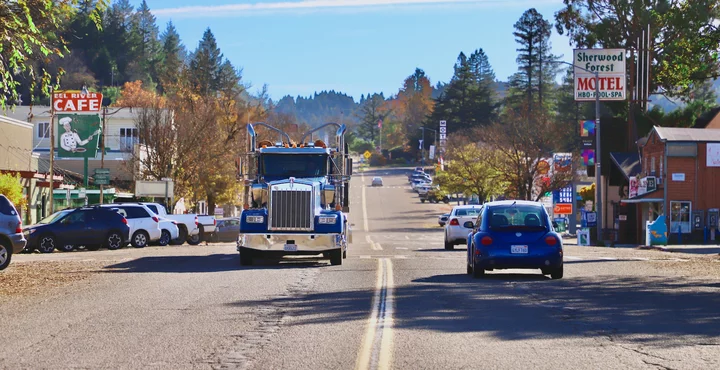
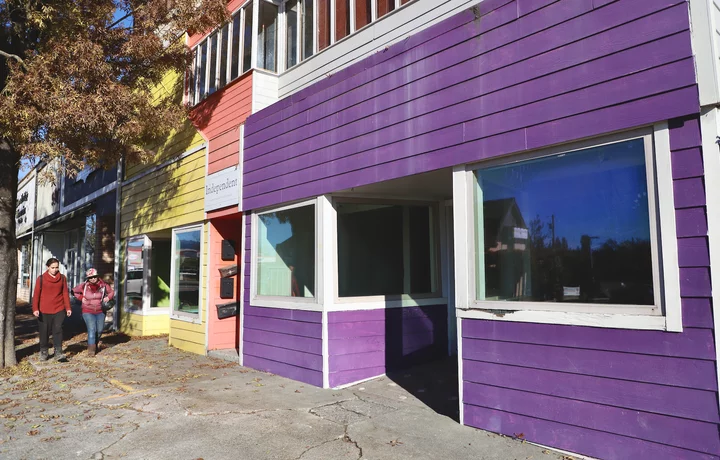

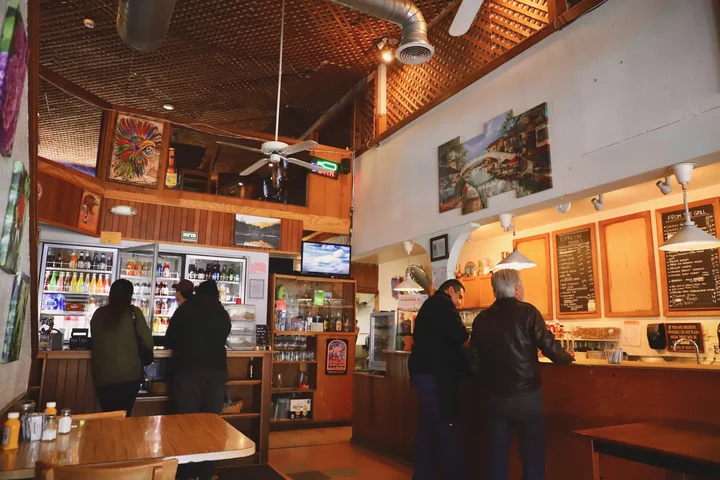
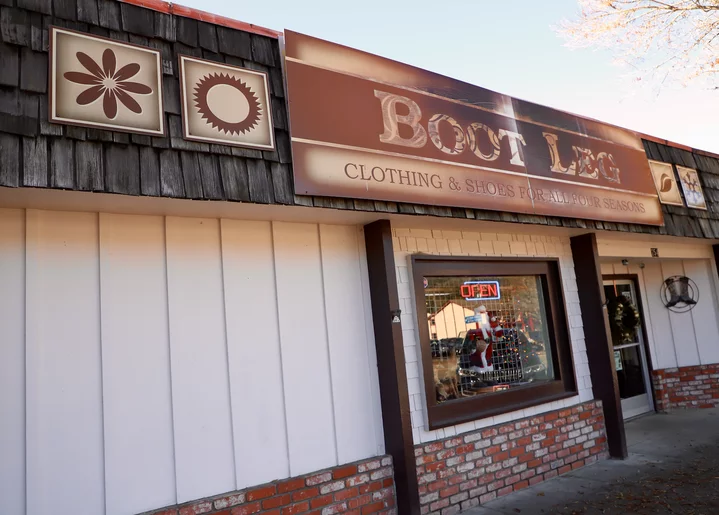
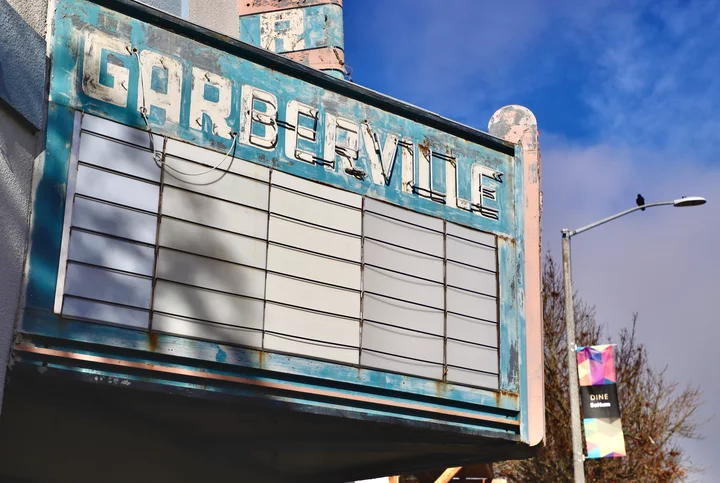
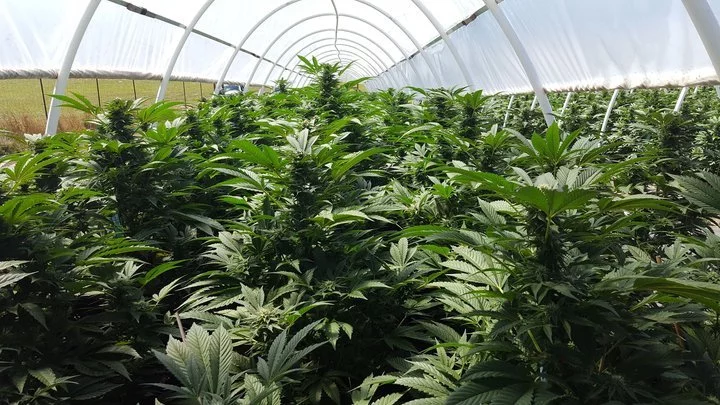


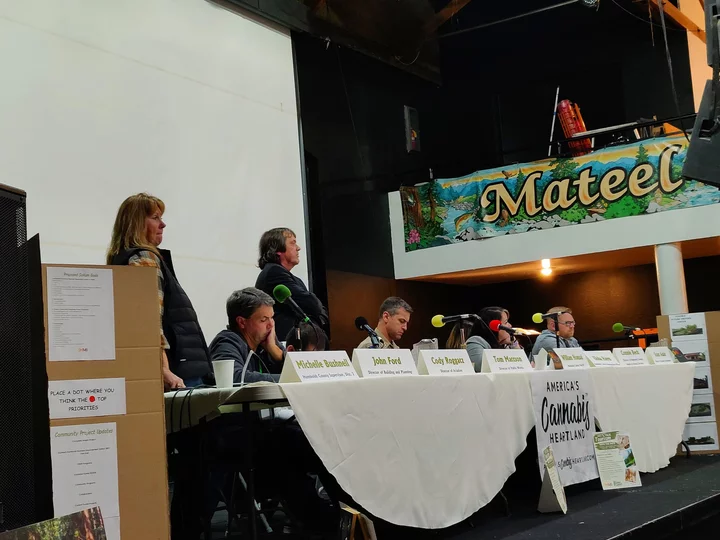
CLICK TO MANAGE